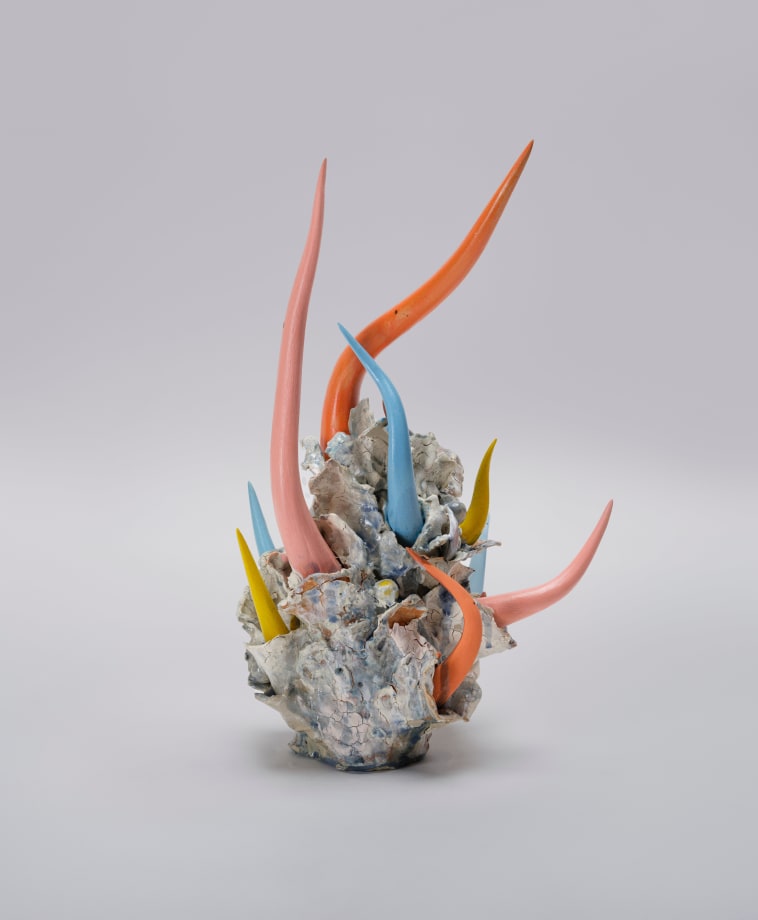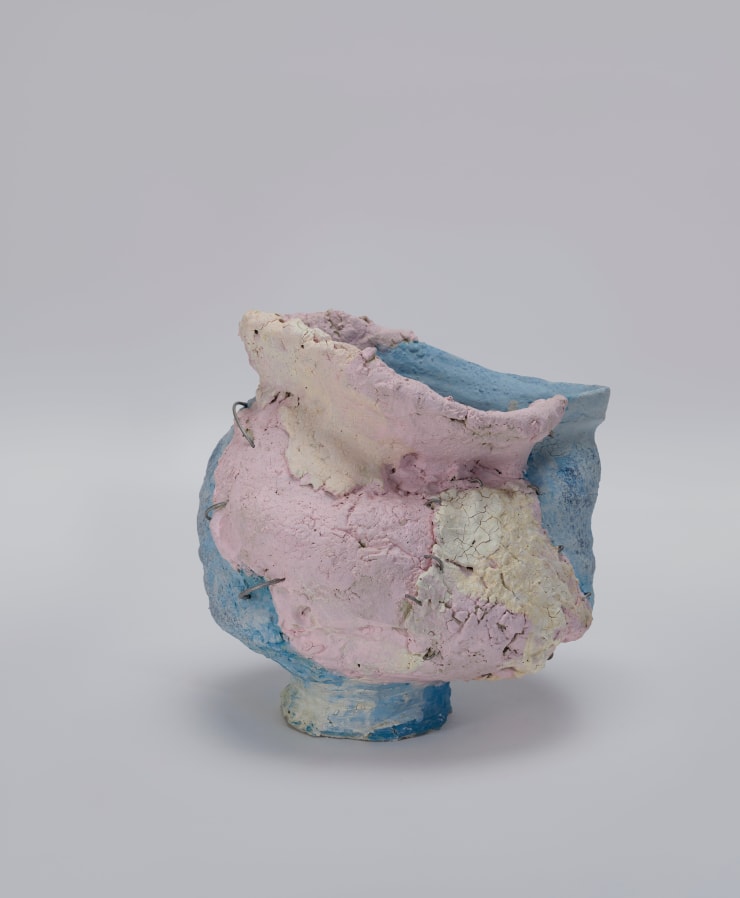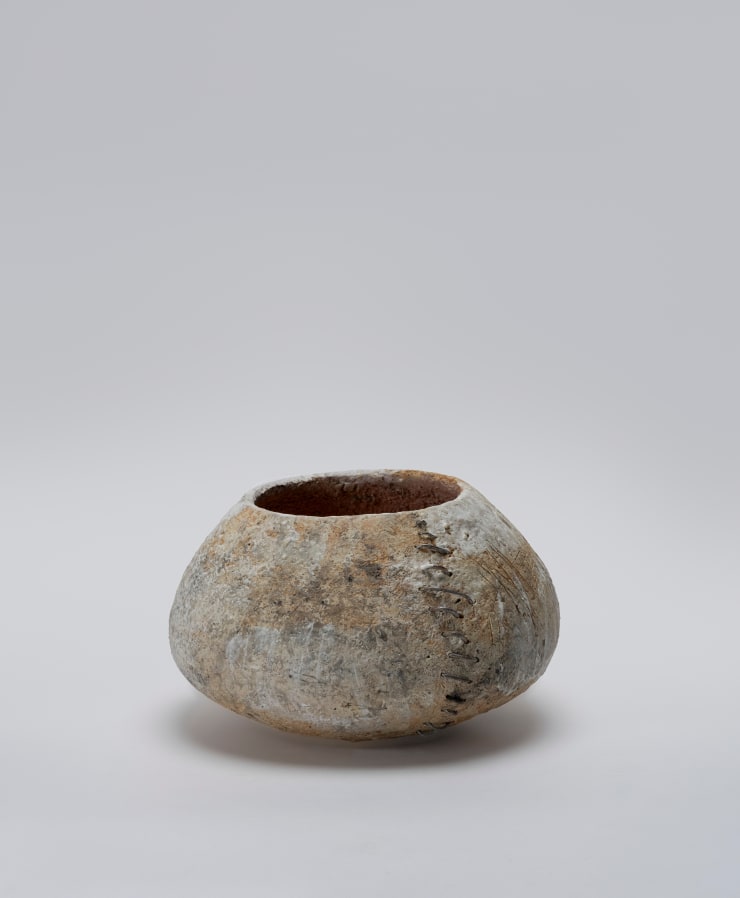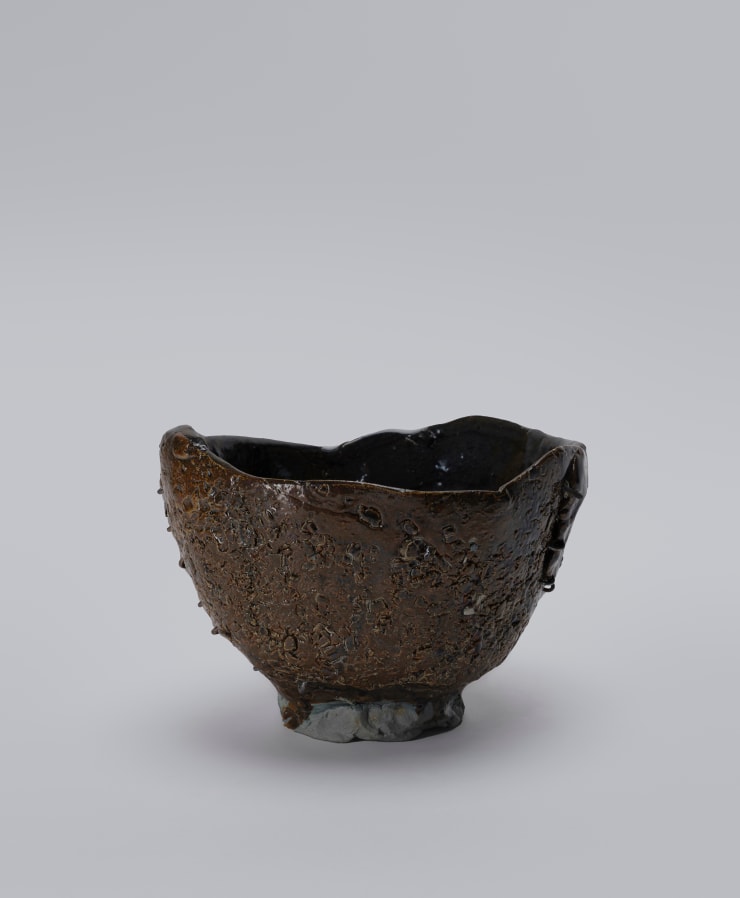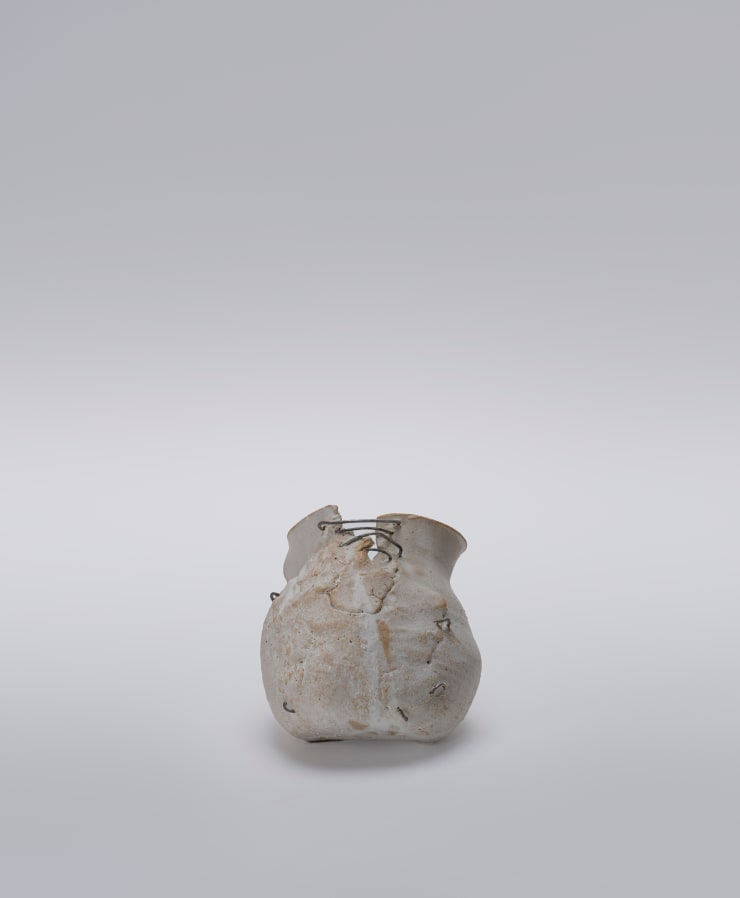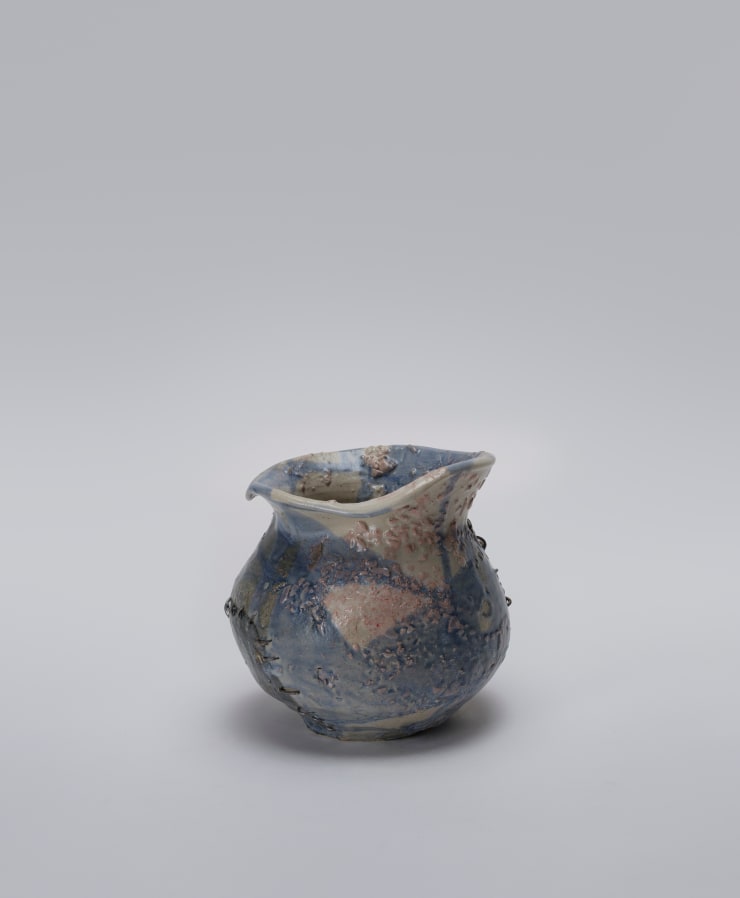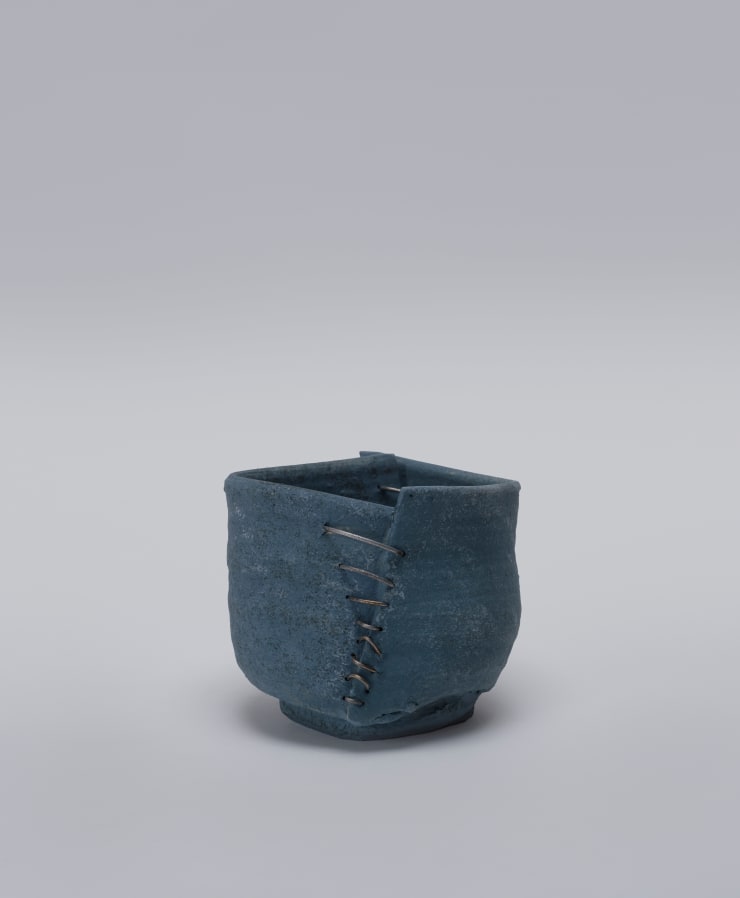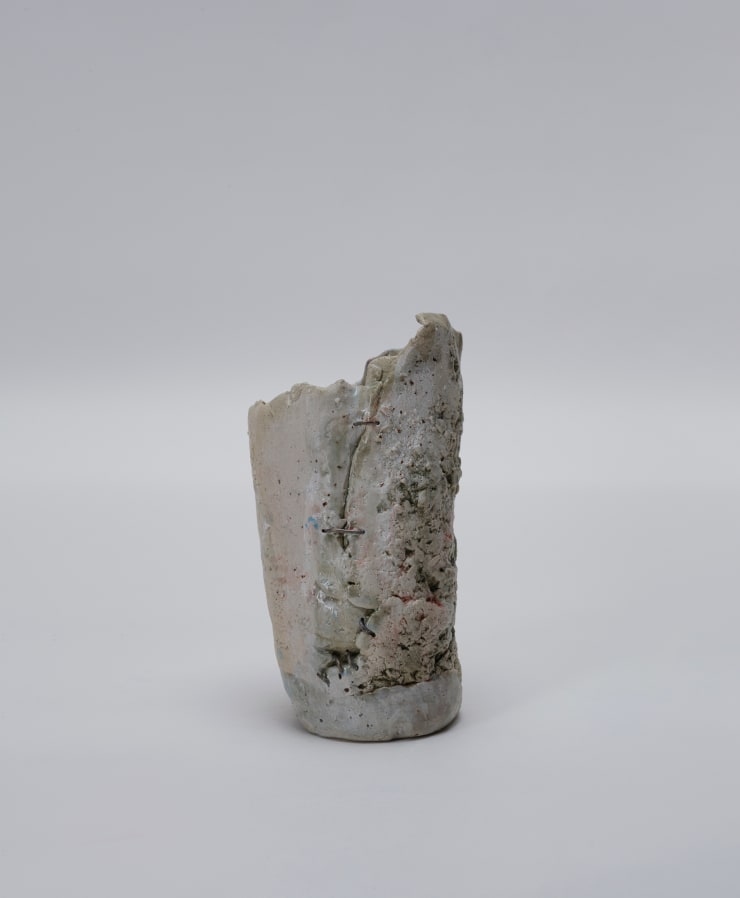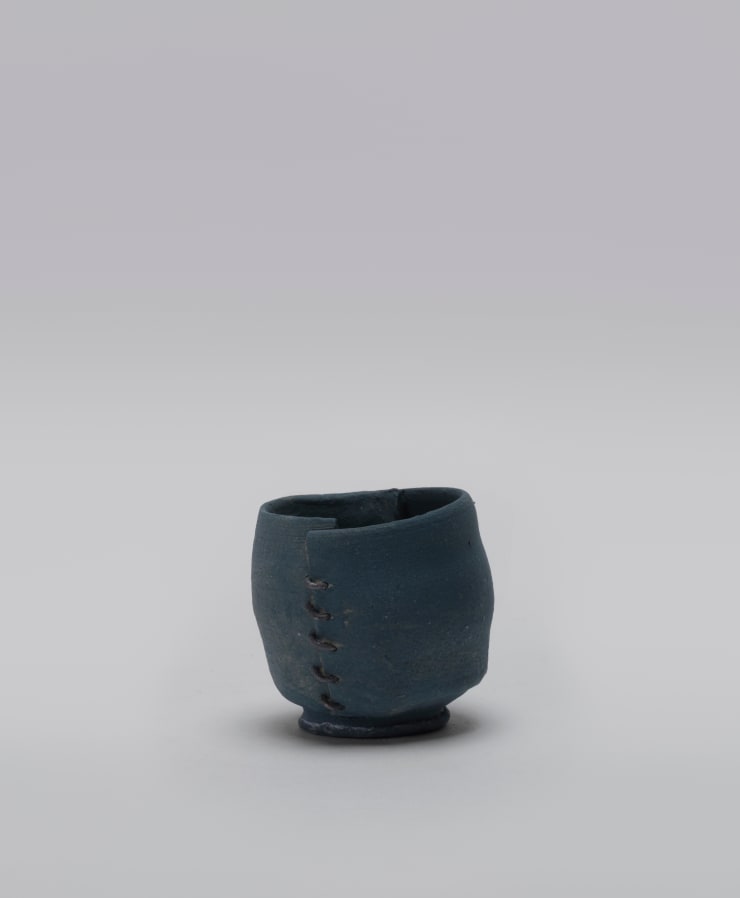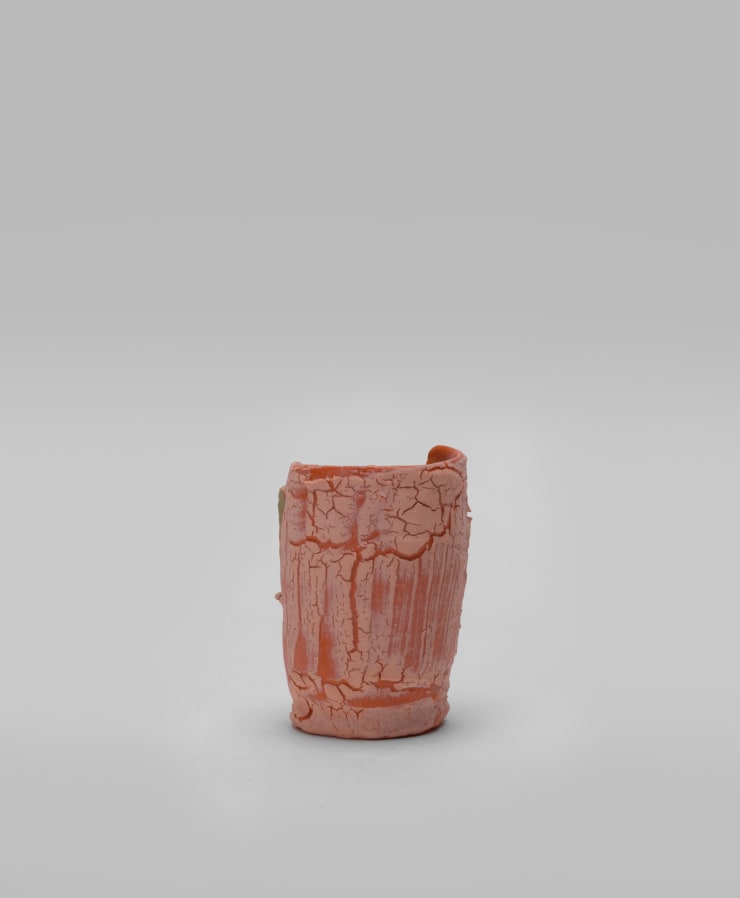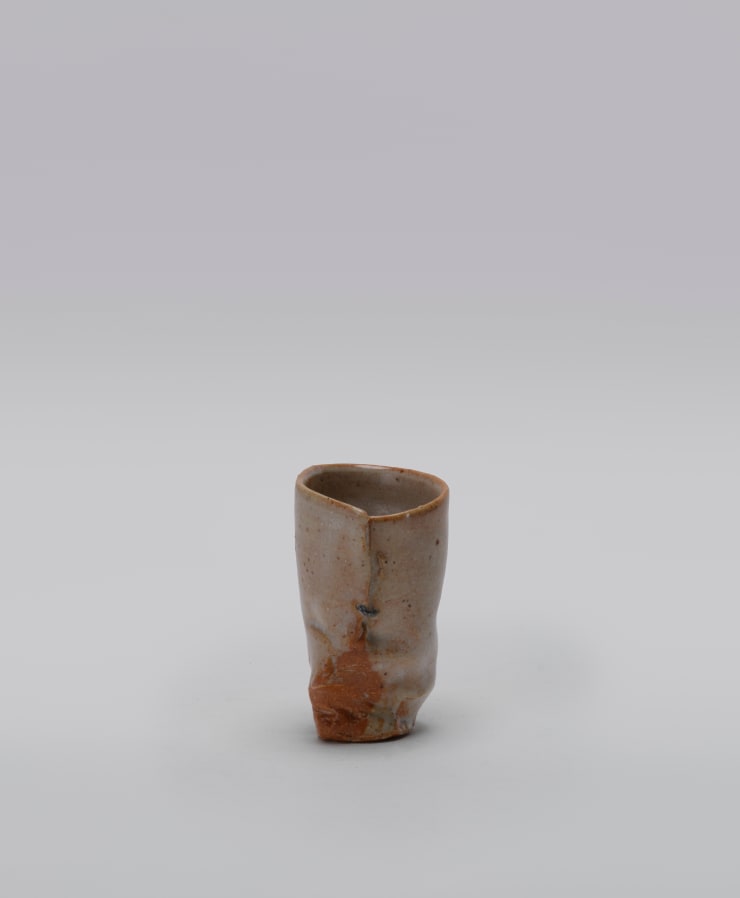Clay & Me: Masatomo Toi
Masatomo Toi's art is deeply captivated by the softness and imperfection of clay as a material. At the core of his work lies an expression of the inner self and a cathartic process of deep introspection, realized through tactile engagement with the material and the creation of form. The softness, natural imperfection, and variability of clay embody the spirit of wabi-sabi-the philosophy that beauty resides in imperfection and the transience of all things.
The works in Clay & Me encapsulate Toi's visual and emotional experiences of living in Melbourne over the past twelve years. Emotionally, the city's culture and lifestyle have resonated profoundly with him, sparking personal transformation. Visually, Toi was inspired by the ageing architectural facades of Collingwood and Fitzroy, cultivating a renewed appreciation for the beauty found within modern urban environments.
Combining these Melbourne experiences with elements of his Japanese heritage, Toi draws on inspirations such as the tattered rags (boro) of Tōhoku, the tea bowls Bakōhan and Seppō, and the discarded waste of the Mino area. Through the layering and coordination of self, discarded materials, obsolescence, and the passage of time, a new sense of beauty emerges within the works.
-
 Masatomo ToiResilience, 2024Ceramic36 × 21 × 21 cmAU$ 4,200.00
Masatomo ToiResilience, 2024Ceramic36 × 21 × 21 cmAU$ 4,200.00 -
 Masatomo ToiTsugi Hagi #Buildup, 2024Ceramic and metal kiln wire31 × 20 × 20 cmSold
Masatomo ToiTsugi Hagi #Buildup, 2024Ceramic and metal kiln wire31 × 20 × 20 cmSold -
 Masatomo ToiTsugi Hagi #Fairy Floss, 2024Ceramic and metal kiln wire25 × 24 × 23 cmAU$ 3,200.00
Masatomo ToiTsugi Hagi #Fairy Floss, 2024Ceramic and metal kiln wire25 × 24 × 23 cmAU$ 3,200.00 -
 Masatomo ToiTsugi Hagi #Magpie, 2024Ceramic and metal kiln wire22 × 23 × 26 cmAU$ 3,200.00
Masatomo ToiTsugi Hagi #Magpie, 2024Ceramic and metal kiln wire22 × 23 × 26 cmAU$ 3,200.00 -
 Masatomo ToiTsugi Hagi #Cracked Heart, 2024Ceramic and metal kiln wire18 × 25 × 22 cmAU$ 2,600.00
Masatomo ToiTsugi Hagi #Cracked Heart, 2024Ceramic and metal kiln wire18 × 25 × 22 cmAU$ 2,600.00 -
 Masatomo ToiTsugi Hagi #Rundown Yellow, 2024Ceramic and metal kiln wire16 × 22 × 21 cmAU$ 2,400.00
Masatomo ToiTsugi Hagi #Rundown Yellow, 2024Ceramic and metal kiln wire16 × 22 × 21 cmAU$ 2,400.00 -
 Masatomo ToiTsugi Hagi #Fog, 2024Ceramic and metal kiln wire20 × 25 × 24 cmAU$ 2,800.00
Masatomo ToiTsugi Hagi #Fog, 2024Ceramic and metal kiln wire20 × 25 × 24 cmAU$ 2,800.00 -
 Masatomo ToiTsugi Hagi #Cat Scratch, 2024Ceramic and metal kiln wire16 × 21 × 22 cmAU$ 2,600.00
Masatomo ToiTsugi Hagi #Cat Scratch, 2024Ceramic and metal kiln wire16 × 21 × 22 cmAU$ 2,600.00 -
 Masatomo ToiBackwoods, 2024Ceramic and metal kiln wire12.5 × 17 × 17 cmSold
Masatomo ToiBackwoods, 2024Ceramic and metal kiln wire12.5 × 17 × 17 cmSold -
 Masatomo ToiShizen, 2024Ceramic and metal kiln wire12.5 × 17 × 16 cmSold
Masatomo ToiShizen, 2024Ceramic and metal kiln wire12.5 × 17 × 16 cmSold -
 Masatomo ToiTsugi Hagi #Fissure, 2024Ceramic and metal kiln wire15 × 16 × 15 cmAU$ 1,600.01
Masatomo ToiTsugi Hagi #Fissure, 2024Ceramic and metal kiln wire15 × 16 × 15 cmAU$ 1,600.01 -
 Masatomo ToiTsugi Hagi #Recumbent, 2024Ceramic and metal kiln wire15 × 13 × 15 cmSold
Masatomo ToiTsugi Hagi #Recumbent, 2024Ceramic and metal kiln wire15 × 13 × 15 cmSold -
 Masatomo ToiTsugi Hagi #Shower of Falling Cherry Blossoms, 2024Ceramic and metal kiln wire18 × 17 × 17 cmAU$ 1,800.00
Masatomo ToiTsugi Hagi #Shower of Falling Cherry Blossoms, 2024Ceramic and metal kiln wire18 × 17 × 17 cmAU$ 1,800.00 -
 Masatomo ToiTsugi Hagi Chawan #Aged Blue, 2024Ceramic and metal kiln wire11 × 13 × 13.5 cmAU$ 480.00
Masatomo ToiTsugi Hagi Chawan #Aged Blue, 2024Ceramic and metal kiln wire11 × 13 × 13.5 cmAU$ 480.00 -
 Masatomo ToiTsugi Hagi Chawan #Aged Pink, 2024Ceramic and metal kiln wire10 × 14 × 13 cmAU$ 480.00
Masatomo ToiTsugi Hagi Chawan #Aged Pink, 2024Ceramic and metal kiln wire10 × 14 × 13 cmAU$ 480.00 -
 Masatomo ToiTsugi Hagi Chawan #Aged White, 2024Ceramic and metal kiln wire8.5 × 13.5 × 12 cmAU$ 420.00
Masatomo ToiTsugi Hagi Chawan #Aged White, 2024Ceramic and metal kiln wire8.5 × 13.5 × 12 cmAU$ 420.00 -
 Masatomo ToiTsugi Hagi Chawan #Orange Crack, 2024Ceramic and metal kiln wire11 × 15 × 14.5 cmSold
Masatomo ToiTsugi Hagi Chawan #Orange Crack, 2024Ceramic and metal kiln wire11 × 15 × 14.5 cmSold -
 Masatomo ToiClay Building #01, 2024Ceramic and metal kiln wire18.5 × 10 × 8 cmAU$ 920.00
Masatomo ToiClay Building #01, 2024Ceramic and metal kiln wire18.5 × 10 × 8 cmAU$ 920.00 -
 Masatomo ToiClay Building #02, 2024Ceramic and metal kiln wire28 × 6 × 6.5 cmAU$ 840.00
Masatomo ToiClay Building #02, 2024Ceramic and metal kiln wire28 × 6 × 6.5 cmAU$ 840.00 -
 Masatomo ToiClay Building #03, 2024Ceramic and metal kiln wire24 × 6 × 6.5 cmAU$ 800.00
Masatomo ToiClay Building #03, 2024Ceramic and metal kiln wire24 × 6 × 6.5 cmAU$ 800.00 -
 Masatomo ToiClay Building #04, 2024Ceramic and metal kiln wire23.5 × 6 × 6 cmAU$ 740.00
Masatomo ToiClay Building #04, 2024Ceramic and metal kiln wire23.5 × 6 × 6 cmAU$ 740.00 -
 Masatomo ToiClay Building #05, 2024Ceramic and metal kiln wire18.5 × 6.5 × 6 cmAU$ 720.01
Masatomo ToiClay Building #05, 2024Ceramic and metal kiln wire18.5 × 6.5 × 6 cmAU$ 720.01 -
 Masatomo ToiClay Building #06, 2024Ceramic and metal kiln wire16.5 × 6 × 6 cmAU$ 600.00
Masatomo ToiClay Building #06, 2024Ceramic and metal kiln wire16.5 × 6 × 6 cmAU$ 600.00 -
 Masatomo ToiClay Building #07, 2024Ceramic and metal kiln wire15.5 × 6 × 6 cmSold
Masatomo ToiClay Building #07, 2024Ceramic and metal kiln wire15.5 × 6 × 6 cmSold -
 Masatomo ToiSharing Connection, 2024Ceramic and metal kiln wire9 × 15.5 × 12 cm (Katakuchi) 5 × 6.5 × 7 cm (brown sake cup) 7 × 6 × 5.5 cm (yellow sake cup)AU$ 760.00
Masatomo ToiSharing Connection, 2024Ceramic and metal kiln wire9 × 15.5 × 12 cm (Katakuchi) 5 × 6.5 × 7 cm (brown sake cup) 7 × 6 × 5.5 cm (yellow sake cup)AU$ 760.00 -
 Masatomo ToiAdjoining, 2024Ceramic and metal kiln wire6.8 × 6.5 × 5.5 cmAU$ 190.00
Masatomo ToiAdjoining, 2024Ceramic and metal kiln wire6.8 × 6.5 × 5.5 cmAU$ 190.00 -
 Masatomo ToiAgeing, 2024Ceramic and metal kiln wire6.2 × 5.5 × 5 cmAU$ 160.00
Masatomo ToiAgeing, 2024Ceramic and metal kiln wire6.2 × 5.5 × 5 cmAU$ 160.00 -
 Masatomo ToiAnastylosis, 2024Ceramic and metal kiln wire5.5 × 7.5 × 7 cmSold
Masatomo ToiAnastylosis, 2024Ceramic and metal kiln wire5.5 × 7.5 × 7 cmSold -
 Masatomo ToiAncient, 2024Ceramic and metal kiln wire6 × 6 × 6.5 cmSold
Masatomo ToiAncient, 2024Ceramic and metal kiln wire6 × 6 × 6.5 cmSold -
 Masatomo ToiAo, 2024Ceramic and metal kiln wire6.5 × 6 × 7 cmAU$ 150.00
Masatomo ToiAo, 2024Ceramic and metal kiln wire6.5 × 6 × 7 cmAU$ 150.00 -
 Masatomo ToiBone, 2024Ceramic and metal kiln wire6 × 6.5 × 7 cmSold
Masatomo ToiBone, 2024Ceramic and metal kiln wire6 × 6.5 × 7 cmSold -
 Masatomo ToiCozy, 2024Ceramic and metal kiln wire7 × 6.8 × 7 cmAU$ 220.00
Masatomo ToiCozy, 2024Ceramic and metal kiln wire7 × 6.8 × 7 cmAU$ 220.00 -
 Masatomo ToiFossil, 2024Ceramic and metal kiln wire5.8 × 7.5 × 8.5 cmAU$ 160.00
Masatomo ToiFossil, 2024Ceramic and metal kiln wire5.8 × 7.5 × 8.5 cmAU$ 160.00 -
 Masatomo ToiGraff, 2024Ceramic and metal kiln wire7.5 × 5.3 × 6 cmSold
Masatomo ToiGraff, 2024Ceramic and metal kiln wire7.5 × 5.3 × 6 cmSold -
 Masatomo ToiKawaii, 2024Ceramic and metal kiln wire4.8 × 5.2 × 5.3 cmSold
Masatomo ToiKawaii, 2024Ceramic and metal kiln wire4.8 × 5.2 × 5.3 cmSold -
 Masatomo ToiLively, 2024Ceramic and metal kiln wire7.5 × 5 × 5 cmSold
Masatomo ToiLively, 2024Ceramic and metal kiln wire7.5 × 5 × 5 cmSold -
 Masatomo ToiMagpie, 2024Ceramic and metal kiln wire6.8 × 6.7 × 6 cmSold
Masatomo ToiMagpie, 2024Ceramic and metal kiln wire6.8 × 6.7 × 6 cmSold -
 Masatomo ToiRaku-Gaki, 2024Ceramic and metal kiln wire7 × 6 × 6 cmSold
Masatomo ToiRaku-Gaki, 2024Ceramic and metal kiln wire7 × 6 × 6 cmSold -
 Masatomo ToiShino, 2024Ceramic and metal kiln wire7 × 5.5 × 4.1 cmAU$ 190.00
Masatomo ToiShino, 2024Ceramic and metal kiln wire7 × 5.5 × 4.1 cmAU$ 190.00 -
 Masatomo ToiShinobi, 2024Ceramic and metal kiln wire6.5 × 6.2 × 5.5 cmAU$ 160.00
Masatomo ToiShinobi, 2024Ceramic and metal kiln wire6.5 × 6.2 × 5.5 cmAU$ 160.00 -
 Masatomo ToiSmokey Ash, 2024Ceramic and metal kiln wire6 × 6 × 6 cmAU$ 160.00
Masatomo ToiSmokey Ash, 2024Ceramic and metal kiln wire6 × 6 × 6 cmAU$ 160.00 -
 Masatomo ToiStitched, 2024Ceramic and metal kiln wire8 × 6.4 × 4.5 cmSold
Masatomo ToiStitched, 2024Ceramic and metal kiln wire8 × 6.4 × 4.5 cmSold -
 Masatomo ToiWood, 2024Ceramic and metal kiln wire6.6 × 5.5 × 4.5 cmAU$ 190.00
Masatomo ToiWood, 2024Ceramic and metal kiln wire6.6 × 5.5 × 4.5 cmAU$ 190.00
